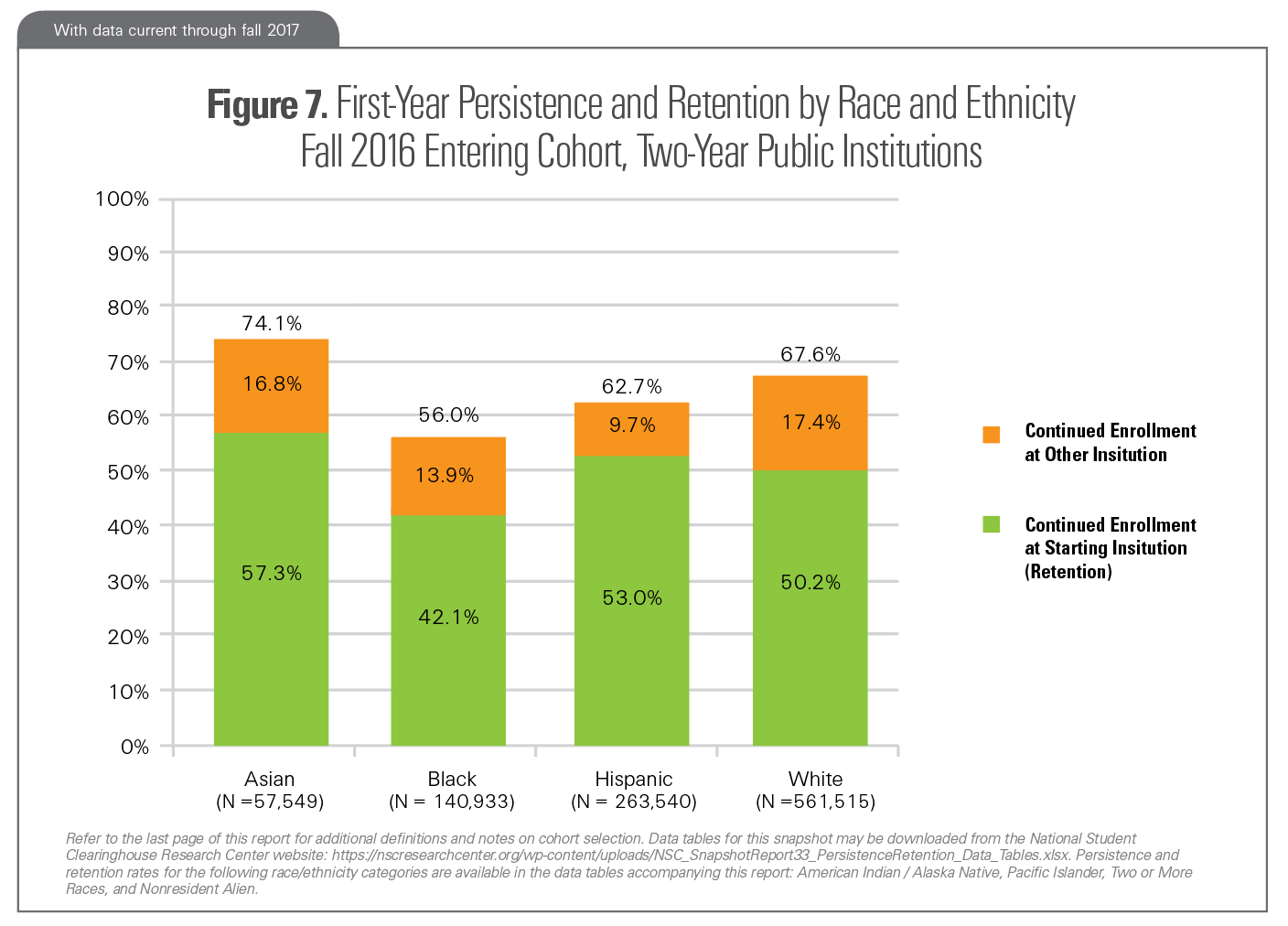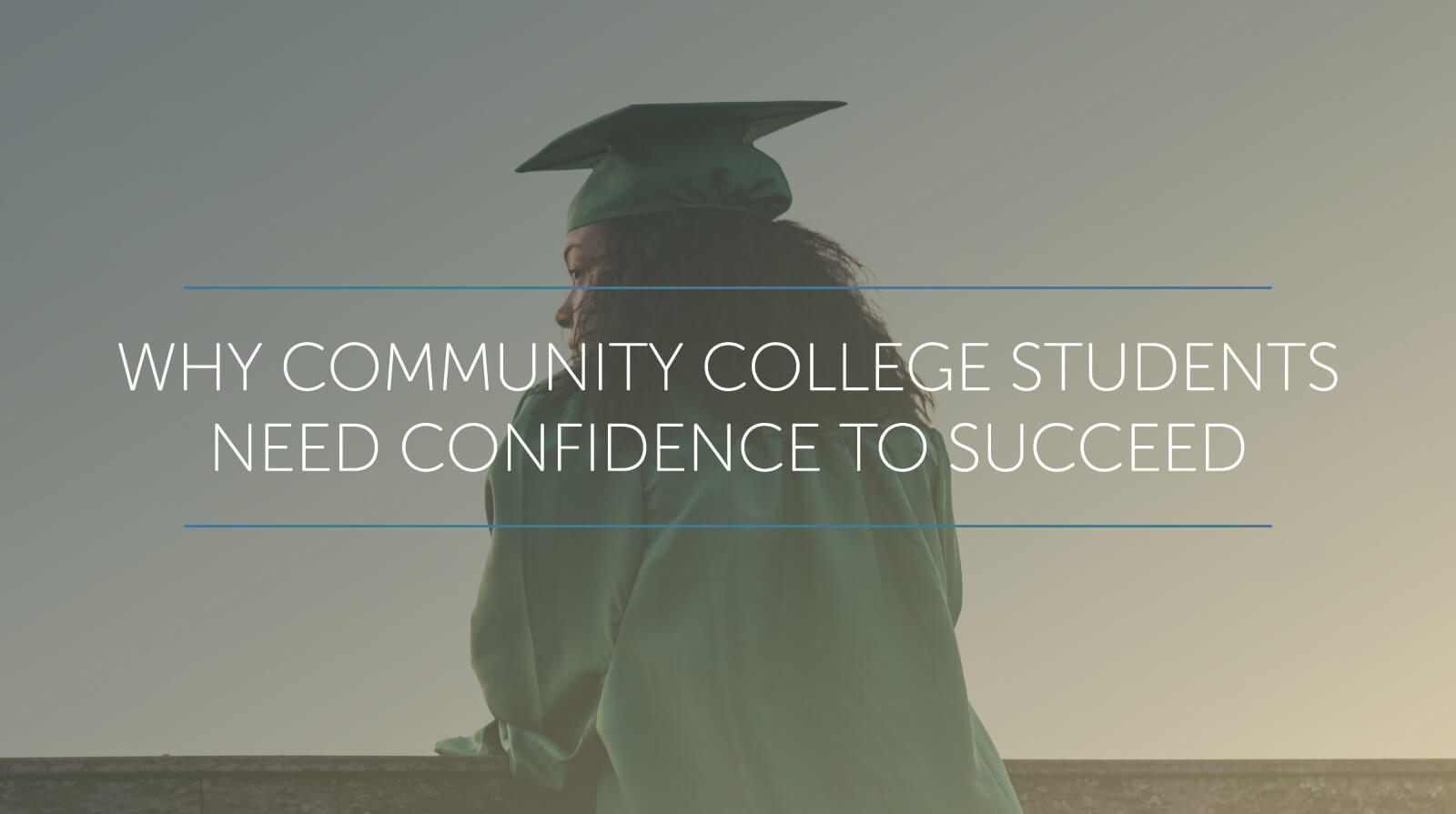Confidence is key when it comes to persistence
Strategic enrollment management requires solving a two-fold problem. Primarily, admissions offices and marketing departments focus their efforts on the first part of the problem: recruiting and admitting new students. However, unless community colleges address retention and persistence issues, it is difficult to reach an optimal enrollment number. And, persistence rates at community colleges continue to be lackluster.
The National Student Clearinghouse, which tracks student enrollment data, reported that among students who entered two-year public institutions in fall 2016, the persistence rate was 62.2 percent. Students who entered full-time did a little better than average, 70%, and students enrolled only part time did a little worse, 55%. About half returned to the same institution in fall 2017.
A new article from the Community College Research Center explores the extent to which academic confidence impacted students’ intent to persist in college. Although other factors, like financial challenges, student characteristics, and academic preparedness have been studied before, this research is unique. It uses data from nearly 100 interviews of community college students at three separate colleges to identify the experiences that reinforce student confidence and those that tear it down.
A quick look at the numbers on persistence and retention
It is unsurprising that retention rates at community colleges continue to be low. Starting at a community college and transferring to a four-year institution continues to be a popular way to gain some college experience and lower debt. Generation Z is likely to continue to enroll in community colleges while planning to transfer to more prestigious institutions.
It is more concerning that the persistence rate at community colleges compares unfavorably with that at public four-year institutions, which can report an 83% persistence rate overall. It also appears that the persistence rate is much lower among Black and Hispanic students than white and Asian students.
 (Figure 5. from the National Student Clearinghouse)
(Figure 5. from the National Student Clearinghouse)
Although recruitment is important, community colleges clearly must address the issue of persistence as a matter of equity and enrollment management. The question is how they can best do that when community college students face so many challenges that are beyond the school’s control. Community colleges already offer competitive tuition rates, remedial courses, and financial aid. As legislative cuts further tax school budgets, it’s difficult to see what more could be done.
How academic experiences impact academic confidence
One factor that affects persistence is academic confidence. New research publicized by the Community College Research Center suggests that when students are not confident, and don’t expect to succeed, they are more likely to drop out. The writers, Susan Bickerstaff, Melissa Barragan and Zawadi Rucks-Ahidiana, suggest that students need to consistently earn success in particular subject areas and in the non-academic areas of college to feel academically confident. When they did, they were less likely to express a desire to drop out.
Bickerstaff, Barragan and Rucks-Ahidiana used comprehensive and ongoing interview with over a 100 students to track shifts in confidence. The students they spoke with entered community college loosely grouped into two categories: self-assured or apprehensive. Some students exhibited both self-assurance and apprehension, regarding different skills and subject areas. Older students, for example, were more apprehensive about new technology.
Once they had spent some time in classes, students reported various destabilizing or successful experiences in school. For instance, an assured student might lose confidence after realizing he couldn’t succeed as easily in college as he could in high school. On the other hand, an apprehensive student might gain confidence after experiencing an earned success, turning hard work into good grades and positive feedback.
Can we intentionally impart academic confidence?
There are some external factors that affect persistence that community colleges can’t control. However, Bickerstaff, Barraga, and Rucks-Ahidiana make some concrete suggestions for how we can impart academic confidence. Faculty members in particular are able to help apprehensive students through destabilizing experiences, like a poor test grade. With constructive feedback and a clear path to achievement, a destabilizing experience can become part of an earned success.
However, they caution that there is a danger in lowering expectations. If success is too easy to achieve, it isn’t an earned success. This means students won’t have the chance to truly build confidence. Instead of lowering their standards faculty should provide more feedback and scaffolded learning opportunities. That way students can experiences fewer devastating failures and more consistent, deserved successes.
When they are more academically confident, students are more likely to persist. As enrollment rates fall it matters more than ever that current students are given the tools to succeed. It’s a matter of principle as much as survival.
References
NSC Research Center. “Persistence & Retention – 2018.” National Student Clearinghouse Research Center. 27 June 2018. Web. 28 Sept 2018
Bickerstaff, Susan, Melissa Barragan and Zawadi Rucks-Ahidiana. “Experiences of Earned Success: Community College Students’ Shifts in College Confidence.” International Journal of Teaching and Learning in Higher Education. 29.3, 2017. Pp. 501-510


